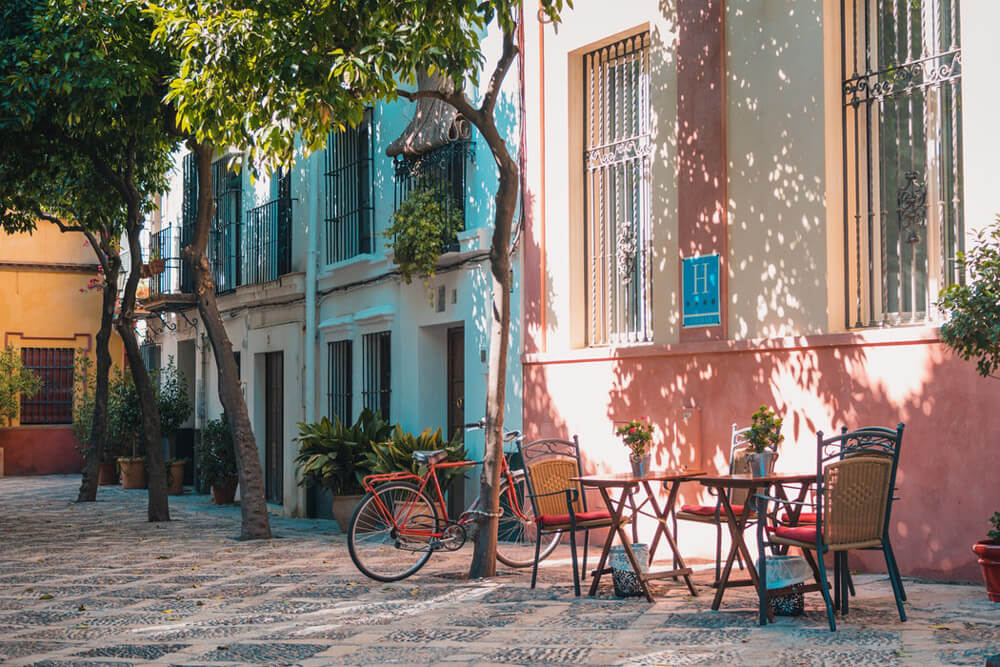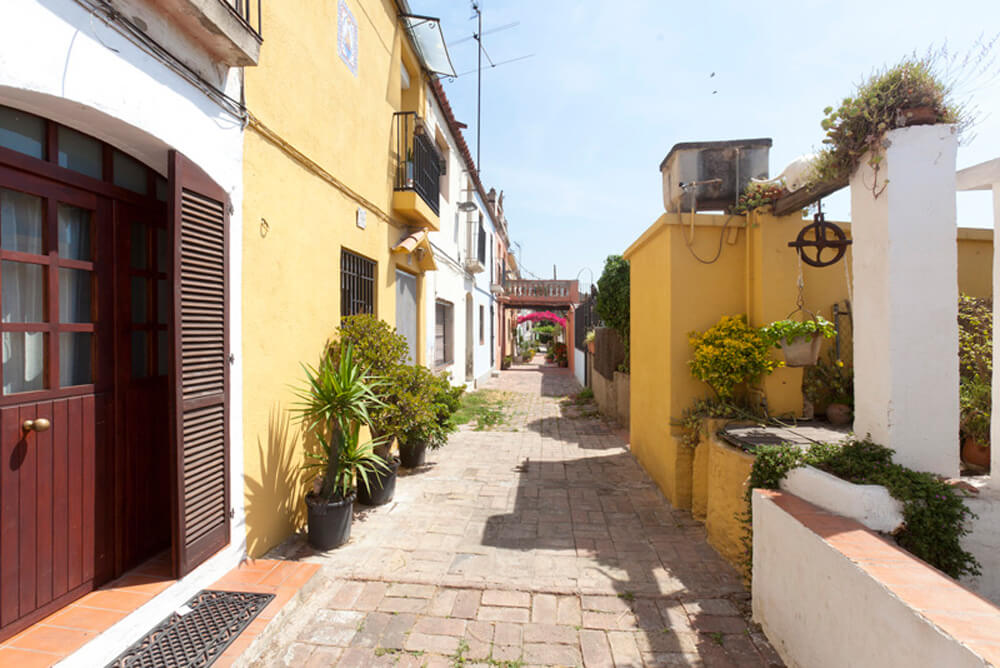
30/04/2019
Hidden spots in Barcelona: 9 places you cannot miss
There are typical places in Barcelona known for their spectacular architecture and influx of people, but there are also faces of the city that go unnoticed if you do not know it well. Squares in the middle of winding neighbourhoods, mysterious gardens with native plants and even buildings of great historical importance that lack the same fame as others. These are the spots in Barcelona that you cannot miss. In this post we reveal some of these well-kept secrets—nine unusual places for those who already know the Sagrada Familia, Las Ramblas or Park Güell, and want to be surprised by what most guides overlook.
1.Jardins de la Tamarita
The urbanism of Barcelona cannot be explained without the role of the bourgeoisie, who during the first years of the 20th century built ostentatious mansions, often flanked by gardens with native and exuberant plant species. This is the case of the Jardines de la Tamarita, in the Sant Gervasi neighbourhood. They are a good place to move out from the city centre and take a break surrounded by nature. These gardens stand out for their combination of French architecture and unique plant species, such as the silky oak and the purple-leaf beech. There is also a children’s play area and a ping pong table.

FROM €39! Take advantage of your break in the Tamarita Gardens to taste local gourmet products. We deliver them to you!
Enjoy a unique experience in Barcelona with a delicious tasting of ham, sausage, chocolate, wine and much more. If you plan a romantic trip this is the ideal plan with your other half!
2.Plaça de Sant Felip Neri
In a nook of the winding streets of the El Gòtic, you can find this hidden gem. A romantic spot with a baroque touch, this square is presided over by a picturesque church and set in perfect silence. But this place also houses a deep historical memory, including a fateful bombing in 1938 during the Civil War. The façade of the church recalls those disastrous events, which have now faded in the background with the coming and going of children playing in the square.
3.Carrer del Petritxol
If you have a sweet tooth, this street will be your undoing. Located in the Gothic quarter, next to La Rambla, it is popularly known as the chocolate street because its chocolate and sweets have taken a leading role in its history. It is a small pedestrian street measuring 130 meters long (it was the first street entirely for pedestrians, paved and without footpaths, in Barcelona) that is full of exquisite aromas in each corner and culminates in the Church of the Pi, the only church that the Saracens allowed during the Muslim rule of Barcelona. On Petritxol street you can see mosaics that show the history of what were formerly the customs of the street. These few square meters, moreover, have been testimony to historical moments such as the first artistic exhibition by Pablo Picasso. Hot chocolate has been served over time among locals and has always delighted tourists. The Granja Palleresa, on Petritxol 11, is one of the most popular.
4. Plaça del Diamant
The so-called Vila de Gràcia is like a village within Barcelona, since it is made up of bustling streets and squares, each one with a unique personality. Here, locals go about their day walking quietly, having a drink with friends, celebrating popular festivities (the Festes de Gràcia, in August, brings together tens of thousands of people) and more. Some of these squares are named after precious stones, such as the topaz or the pearl, since they are located in a former neighbourhood of jewellers. The Plaça del Diamant, known for the novel of the same name by Mercè Rodoreda, icon of post-war literature, also has a very vivid memory of the Civil War. Visitors can experience the events of the time by visiting the underground anti-aircraft shelter, built by locals during the war and discovered during construction works in 1992. Visits are accompanied by a guide.
5.Font del Gat – Jardins de Laribal
The gardens of Laribal, located in the mountain of Montjuïc, were a gathering place during the 19th century for the popular classes, who would go there to have an afternoon snack. It was remodelled several times and currently features a Hispano-Arabic look that was designed by the French landscape architect Nicolás Forestier and finished by Nicolau Maria Rubió i Tudurí. It has terraces with pergolas, squares and fountains, such as the famous Font del Gat, a hidden fountain among vegetation that lent its name to a popular song and attracts couples and families alike. In addition, it offers one of the best views of Barcelona

FROM €39! We bring you a delicious tasting of local gourmet products at Font del Gat.
Enjoy a different experience in Barcelona with an exquisite selection of ham, sausage, chocolate, wine and much more. If you are planning a quiet romantic date in the city, this is the ideal plan with your significant other!
6. Biblioteca Arús
Although libraries are not usually a tourist attraction, this one located in the Passeig Sant Joan is known for the replica of the Statue of Liberty it houses inside. It currently has a bibliographic collection that exceeds 74,000 copies as well as the fourth Statue of Liberty in the world. It specialises in 19th century social and cultural history, Freemasonry, anarchism and the labour movement.
7. Necrópolis romana en el Gòtic
In the Plaça de la Vila de Madrid, between La Rambla and the Portal de l’Àngel, you’ll come across the site of a Roman sepulchral way dating between the 1st and 3rd centuries. At that time, Roman law did not allow the deceased to be buried within the city, and therefore funeral areas like this one, which holds up to 85 tombs of people from the popular classes, were located outside the city walls. If you are interested in immersing yourself in the Roman past of Barcelona, a short distance from this square, you will find the Museu d’Història de Barcelona (MUHBA) in the Plaça del Rei (which houses a medieval monumental complex of great interest itself). Here visitors can Here, visitors can go down to the subsoil of the city and walk through the streets of Roman Barcelona in a site of priceless archaeological value.
8.Las cuevas de Jujol
In the neighbourhood of La Creueta del Coll, one of the furthest from the tourist masses, lies an estate with a secret that its owner in the early twentieth century, Salvador Sansalvador, was responsible for keeping: a well whose water was believed to be medicinal. Josep Maria Jujol—modernist architect in charge of the works during which the well was found and one of Gaudí’s collaborators in the design of La Pedrera and Parc Güell—was commissioned to dig an artificial labyrinth-like cave to better access the well. This in turn gave it an aura of mystery. Well water was sold for a long time until the operation ran out. To visit this cave you will need to book a guided tour in the Taller d’Història de Gràcia, which manages this space.
9.El Carrer d’Aiguafreda
Also popularly known as the Bugaderes d’Horta, this peculiar street was located outside the city limits and became popular due to the abundance of running water located there. At the time, houses inside the city lacked the same luxury. For this reason, the Horta neighbourhood became the place where the clothes of the bourgeois population of Barcelona were cleaned. Here, women carried out this hard work (in some reports it was said that the pregnant laundresses gave birth at 7 the morning and at 9 they were back working in the laundry), but the street was also a meeting place to exchange knowledge and experiences. It is a very narrow street that looks like it’s the property of the houses that flank it, so it’s important to take care not to bother the residents when passing through.





